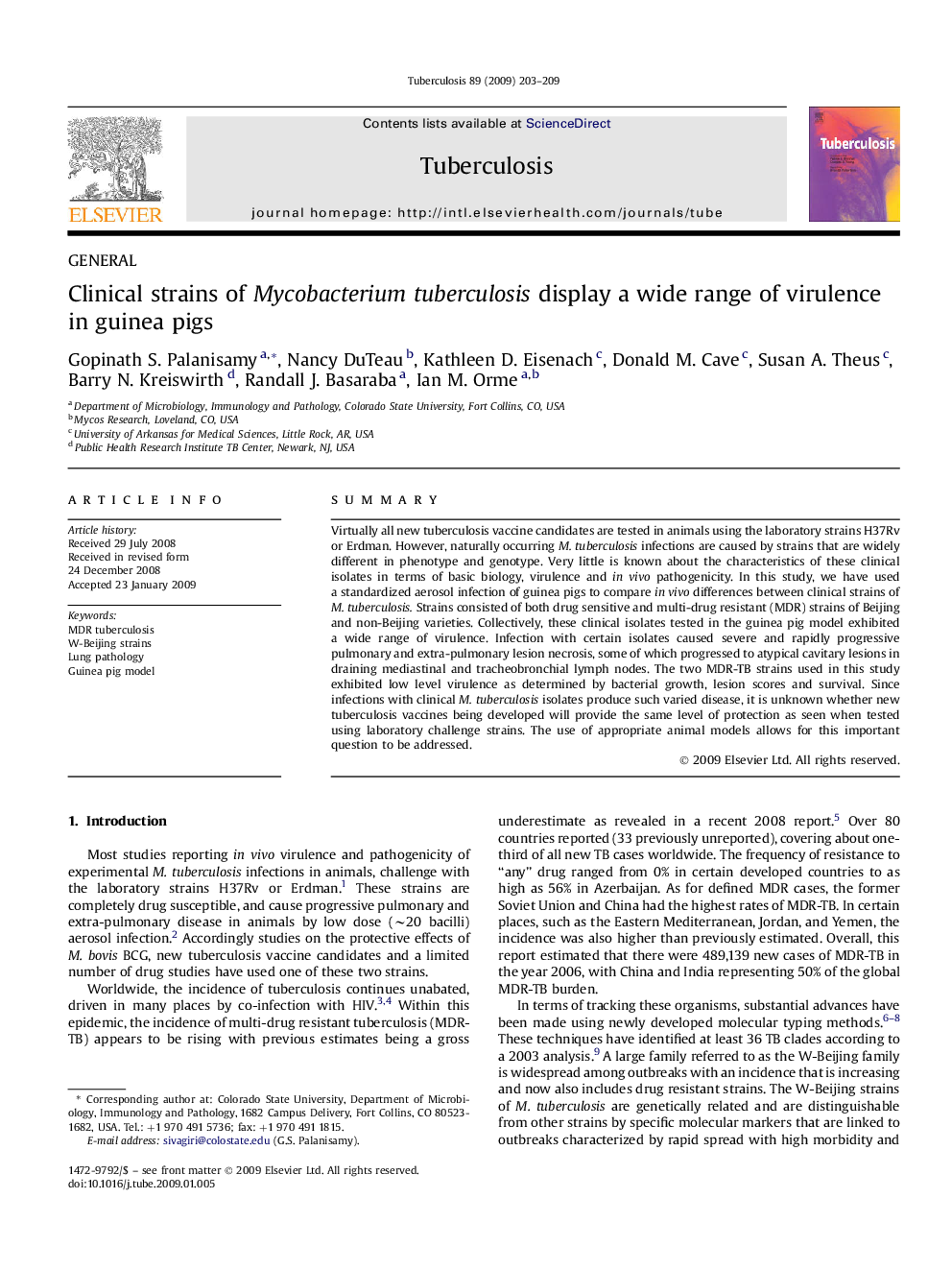| Article ID | Journal | Published Year | Pages | File Type |
|---|---|---|---|---|
| 2401913 | Tuberculosis | 2009 | 7 Pages |
SummaryVirtually all new tuberculosis vaccine candidates are tested in animals using the laboratory strains H37Rv or Erdman. However, naturally occurring M. tuberculosis infections are caused by strains that are widely different in phenotype and genotype. Very little is known about the characteristics of these clinical isolates in terms of basic biology, virulence and in vivo pathogenicity. In this study, we have used a standardized aerosol infection of guinea pigs to compare in vivo differences between clinical strains of M. tuberculosis. Strains consisted of both drug sensitive and multi-drug resistant (MDR) strains of Beijing and non-Beijing varieties. Collectively, these clinical isolates tested in the guinea pig model exhibited a wide range of virulence. Infection with certain isolates caused severe and rapidly progressive pulmonary and extra-pulmonary lesion necrosis, some of which progressed to atypical cavitary lesions in draining mediastinal and tracheobronchial lymph nodes. The two MDR-TB strains used in this study exhibited low level virulence as determined by bacterial growth, lesion scores and survival. Since infections with clinical M. tuberculosis isolates produce such varied disease, it is unknown whether new tuberculosis vaccines being developed will provide the same level of protection as seen when tested using laboratory challenge strains. The use of appropriate animal models allows for this important question to be addressed.
